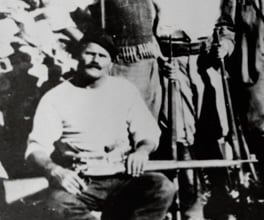Battle of Crete
In war, even small islands can be important. They provide landing fields for aeroplanes and harbours for shipping. Command of a strategic island can provide control over a large surrounding area. Some of the fiercest battles in World War II were fought over relatively small islands.
In 1941, German and Italian forces drove the Allies off the Greek mainland. Some Allied troops – British, Australian, New Zealand soldiers and Greek civil milita – retreated to the nearby island of Crete and took up a defensive position there. The German high command were determined to drive them off Crete, but Hitler was preparing to invade Russia and did not want to divert his resources. The German commanders in Greece were given a strict deadline for the Crete campaign.
The British Royal Navy controlled the waters around Crete, so the Germans attacked from the air. On 21 May 1941 they landed large numbers of paratroops, and other soldiers in gliders along the northern coast of the island. This was the first time ever that a large-scale attack had been made by airborne troops. At first, the Germans suffered severe casualties: many of the men who landed by glider were killed before they even got out of their aircraft.
But the Germans eventually gained control of a landing field and then were able to safely land large numbers of reinforcements. From this point on, they advanced across the island, but with fierce fighting all the way. The men and women of Crete resisted the Germans, using whatever weapons they could find. This was the first time German forces had encountered strong resistance from a civilian population.
[S]ome villages were burning after being bombed [by German planes] and the people must have known we were leaving. I felt ashamed to desert such gallant people. People who were poor, were risking their lives for freedom and helped so many British, Australian and New Zealanders who remained behind in Crete...
- George Weelink, New Zealand soldier
George Weelink in Forty, G 2001 The Battle of Crete, Ian Allen Publishing, Hersham, Surrey.
The British Royal Navy was able to evacuate 16,000 troops to Egypt, but had to leave many others behind, including 9000 Australian and New Zealand troops, and thousands of Greek soldiers. Most of these surrendered to the Germans and went to prisoner-of-war camps but some went into hiding and fought with the Cretan resistance. Others managed to make their own escape from the island.
Soldiers of the Royal British Army, Navy, Air Force! There are many of you still hiding in the mountains, valleys and villages. You have to present yourself AT ONCE to the German troops. Every opposition will be completely useless. Every attempt to flee will be in vain.
- German poster displayed in occupied Crete
The German term for paratrooper is fallschirmjaeger, which means ‘parachute hunter’. The Germans used large gliders to land troops on Crete. These planes had no engines of their own. They were launched by being towed behind powered aircraft, and once landed they could not take off again quickly. This was only the second time gliders had been used in this way. In May 1940, the Germans had used gliders to land troops and successfully attack strategic bridges in Belgium.
At home in Australia, newspapers praised the courage of Australian troops, but the withdrawal from Crete was a demoralising blow. Many Australian soldiers were now prisoners in German camps, and would not return until the end of the war.











